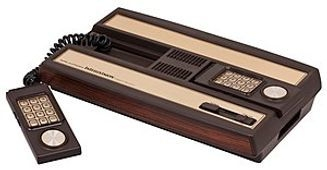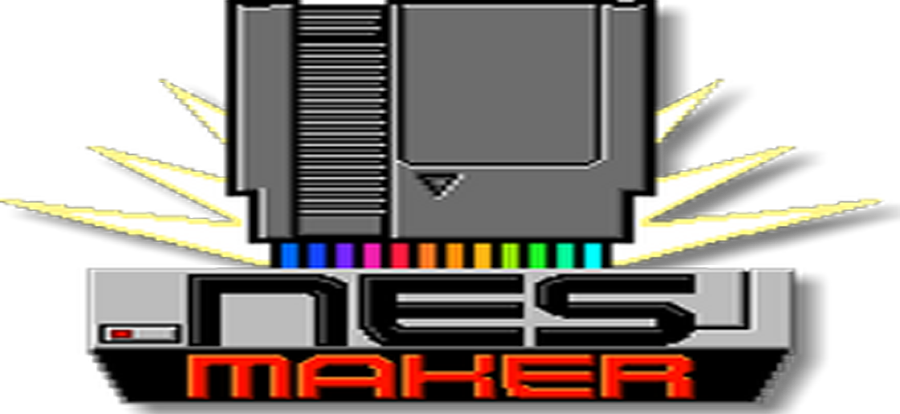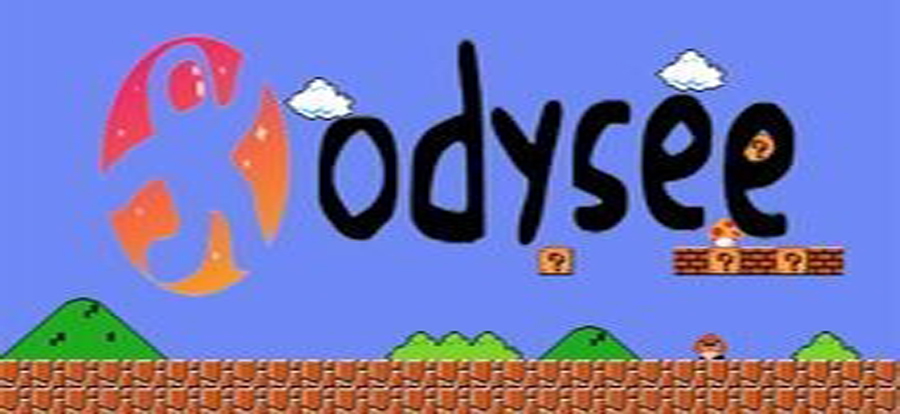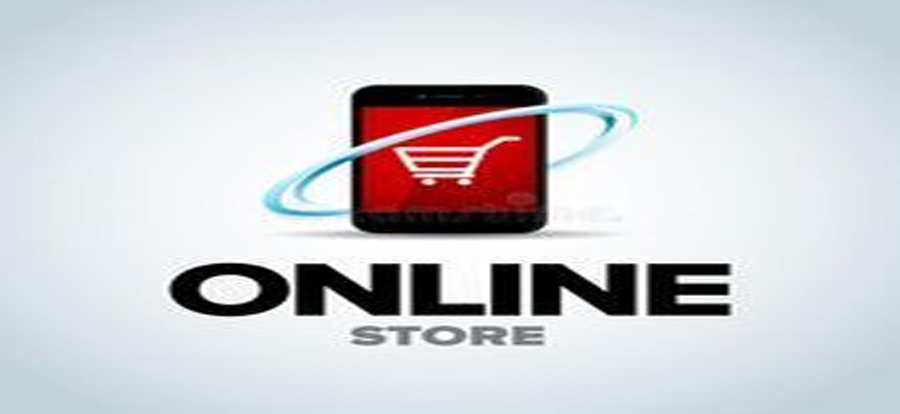

Intellivision
Manufacturer Mattel Electronics
Type Home video game console
Generation Second generation
Retail availability 1979 US test market
1980 NA (US$299 CA$399)
1981 UK (£199)
1982 Germany (DM499)
1982 France[5] (F255)
1982 Japan (¥49800)
1983 Brazil
Discontinued 1990
Units sold over 3 million (1980-83)
Media ROM cartridge
CPU GI CP1610
Memory 524B RAM, 932B graphics RAM, 7168B ROM
Sound GI AY-3-8914
Controller input 16 direction pad, 15 button
Online services PlayCable
Best-selling game Las Vegas Poker & Blackjack 1.939 million
Major League Baseball 1.085 million (as of June 1983)
Successor HyperScan
Website www.intellivisionlives.com
The Intellivision is a home video game console released by Mattel Electronics in 1979. The name Intellivision is a portmanteau of "intelligent television". Development of the console began in 1977, the same year as the introduction of its main competitor, the Atari 2600. In 1984 Mattel sold the Intellivision business to a former Mattel Electronics executive and investors that would become INTV Corporation. Games development started in 1978 and continued until 1990 when the Intellivision was discontinued. From 1980 to 1983 over 3 million Intellivision units were sold.
In 2009, video game website IGN named the Intellivision the No. 14 greatest video game console of all time. It remained Mattel's only video game console until the release of the HyperScan in 2006.
History and development
Master Component
The Intellivision was developed at Mattel in Hawthorne, California along with their Mattel Electronics line of handheld electronic games. Mattel Electronics becoming a subsidiary in 1981. The Intellivision was test marketed in Fresno, California in 1979 with a total of four games available. It was released nationwide in 1980 with a price tag of US$299, a pack-in game: Las Vegas Poker & Blackjack and a library of ten cartridges.
Mattel's Design and Development group began investigating a home video game system in 1977. It was to have rich graphics and long lasting gameplay to distinguish itself from its competitors. Mattel identified a new but expensive chipset from National Semiconductor and negotiated better pricing for a simpler design. Their consultant, APh Technological Consulting, suggested a General Instrument chipset, listed as the Gimini programmable set in the GI 1977 catalog. The GI chipset lacked reprogrammable graphics and Mattel worked with GI to implement changes. GI published an updated chipset in their 1978 catalog. After initially choosing National in August 1977, Mattel waited for two months before ultimately going with the proposed GI chipset in the fall of 1977. A team at Mattel, headed by David Chandler began engineering the hardware, including the famous hand controllers. In 1978, David Rolfe of APh developed the executive control software (Exec) and with a group of Caltech summer student hires, programmed the first games. Graphics were designed by artists at Mattel led by Dave James.
Though not the first system to challenge Warner Communications' Atari, it was the first to pose a serious threat to the market leader. A series of advertisements featuring George Plimpton were produced that demonstrated the superiority of the Intellivision's graphics and sound to those of the Atari 2600, using side-by-side game comparisons. One of the slogans of the television advertisements stated that Intellivision was "the closest thing to the real thing"; one example in an advertisement compared golf games. The other console's games had a blip sound and cruder graphics, while the Intellivision featured a realistic swing sound and striking of the ball, and graphics that suggested a more 3D look. There was also an advertisement comparing the Atari 2600 to it, featuring the slogan "I didn't know". In its first year, Mattel sold out its initial 175,000 production run of Intellivision "Master Components". In 1981, over 1 million Intellivision consoles were sold.
Gray rectangular console with two controllers. Controllers have number pads and circular dials
Super Video Arcade
The Intellivision Master Component was branded and distributed by various companies. Before Mattel shifted manufacturing to Hong Kong, Mattel Intellivisions were manufactured by GTE Sylvania. GTE Sylvania Intellivisions were produced along with Mattel's with the brand name the only differentiation. The Sears Super Video Arcade, manufactured by Mattel in Hong Kong, has a restyled beige top cover and detachable controllers. The Sears Intellivision also has a modified Exec removing "Mattel Electronics" from the default titlescreen. In 1983 Radio Shack marketed the Tandyvision One, similar to the original Intellivision but with the gold plates replaced with more wood trim. In Japan Intellivisions were branded by Bandai in 1982, and in Brazil there were Digimed and Digiplay Intellivisions manufactured by Sharp in 1983.
Software
See also: List of Intellivision games
Inside every Intellivision is 4K of ROM containing the Exec software. It provides two benefits: reusable code that can effectively make a 4K cartridge an 8K game, and a software framework for new programmers to develop games more easily and quickly. It also allows other programmers to more easily review and continue another's project. Under the supervision of David Rolfe (APh) and graphics supplied by Mattel artist Dave James, APh was able to quickly create the Intellivision launch title library using mostly summer students. The drawback is that to be flexible and handle many different types of games the Exec runs less efficiently than a dedicated program. Intellivision games that leverage the Exec run at a 20 Hz frame rate instead of the 60 Hz frame rate for which the Intellivision was designed. Using the Exec framework is optional, but almost all Intellivision games released by Mattel Electronics are 20 Hz. The limited ROM space also meant there was no room for computer artificial intelligence and many early games required two players.
Initially, all Intellivision games were programmed by the outside firm, APh Technological Consulting, with 19 cartridges produced before Christmas 1980. Once the Intellivision project became successful, software development would be brought in-house. Mattel formed its own software development group and began hiring programmers. The original five members of that Intellivision team were Mike Minkoff, Rick Levine, John Sohl, Don Daglow, and manager Gabriel Baum. Levine and Minkoff, a long-time Mattel Toys veteran, both came over from the hand-held Mattel games engineering team. During 1981 Mattel hired programmers as fast it could. Early in 1982 Mattel Electronics relocated from Mattel headquarters to an unused industrial building. Office renovation work happened as new staff moved in. To keep these programmers from being hired away by rival Atari, their identity and work location was kept a closely guarded secret. In public, the programmers were referred to collectively as the Blue Sky Rangers.
Most of the early games were based on traditional concepts such as sports and other games, with an emphasis on realism and depth of play (allowed by the technology of the day). The Intellivision was not marketed as a toy and as such the games were not pick-up-and-play like arcade style games (e.g. Sea Battle, B-17 Bomber). Reading the instructions was often a prerequisite to play. Every cartridge produced by Mattel Electronics included two plastic controller "overlays" to help navigate the 12 keypad buttons, although not every game made use of the keypad. Mattel organised their games into networks: Major League Sports, Action, Strategy, Gaming, Children's Learning and later Space Action, and Arcade. The network concept was dropped in 1983, as were the convenient gate-fold style boxes for storing the cartridge, instructions, and overlays.
Starting in 1982 programmers looking for credit and royalties on sales began leaving both APh and Mattel Electronics. They joined Activision, Imagic, and Atari to create Intellivision games for third party publishers. Cheshire Engineering was formed by a few senior APh programmers including David Rolfe, author of the Exec, and Tom Loughry who created one of the most popular Intellivision games Advanced Dungeons and Dragons. Cheshire would create Intellivision games for Activision. Third party developers Activision, Imagic, and Coleco started producing Intellivision games in 1982. And then Atari, Parker Brothers, Sega, and Interphase followed in 1983. The third party developers, not having legal access to Exec knowledge, often bypassed the Exec framework to create smooth 30 Hz and 60 Hz Intellivision games (e.g. The Dreadnaught Factor). Cheaper ROM prices also allowed for larger games as 8K, 12K, and then 16K cartridges became common. The first Mattel Electronics Intellivision game to run at 60 Hz was Masters of the Universe in 1983. Marketing dubbed the term "Super Graphics" on the game's packaging and marketing.
Mattel Electronics' team of programmers was diverse in experience and talent, proving to be an advantage. As competitors were often depending on licensing well known trademarks to sell video games, Mattel would have to focus on original ideas. Don Daglow was a key early programmer at Mattel and became director of Intellivision game development. Daglow created Utopia, a precursor to the sim genre and, with Eddie Dombrower, the ground breaking sports simulation World Series Major League Baseball. Daglow was also involved with the popular Intellivision games Tron Deadly Discs and Shark! Shark!. After Mattel Electronics closed in 1984, their programmers would go on to make significant contributions to the video game industry. Don Daglow and Eddie Dombrower went on to Electronic Arts to create Earl Weaver Baseball, Don Daglow founded Stormfront Studios. Bill Fisher, Steve Roney and Mike Breen founded Quicksilver Software and David Warhol founded Realtime Associates.
Keyboard Component
The Keyboard Component code-named the Blue Whale also known as the Intelliputer
From the beginning, Intellivision's packaging and promotional materials as well as television commercials, promised the addition of a soon-to-be-available accessory called the "Keyboard Component". The Intellivision was designed as a modular home computer. The Master Component could be purchased as a stand-alone video game system and the Keyboard Component could be added, providing the computer keyboard and tape drive. Not meant to be a hobbyist or business computer, the Intellivision home computer was meant to run pre-programmed software and bring "data flow" (Videotex) into the home.
The Keyboard Component added an 8-bit 6502 processor making the Intellivision a dual processor computer. It had 16K 10-bit shared RAM that could load and execute both Intellivision CP1610 and 6502 program code from tape; a large amount as typical cartridges of the day were 4K. The cassettes have two tracks of digital data and two tracks of analog audio completely controlled by the computer. Two tracks are read only for the software, and two tracks for user data. The tape-drive was block addressed with high speed indexing. A high resolution 40x24 monochrome text display could overlay regular Intellivision graphics. There was an input for a microphone and two expansion ports for peripherals and RAM expansion. The Microsoft BASIC programming cartridge used one of these ports. Expanded memory cartridges could support 1000 8KB pages. A third pass-through cartridge port was for regular Intellivision cartridges. It uses the Intellivision's power supply. A 40-column thermal printer was available, and a telephone modem was planned along with voice synthesis and voice recognition.
David Rolfe of APh wrote a control program for the Keyboard Component called PicSe (Picture Sequencer) specifically for the development of multimedia applications. PicSe synchronized the graphics and analog audio while concurrently saving or loading data to tape. Productivity software for home finances, personal improvement, and self education were planned. Subject experts were consulted and their voices recorded and used in the software.
Three applications using the PicSe system were released on cassette tape:
Conversational French
Jack Lalanne's Physical Conditioning
Spelling Challenge
Five BASIC applications were released on tape: Programs written in BASIC did not have access to Intellivision graphics and would be sold at a lower price.
Family Budgeting
Geography Challenge
Crosswords I, II, and III
While the Keyboard Component was an ambitious piece of engineering for its time it was repeatedly delayed as the engineers tried to overcome reliability issues and reduce manufacturing costs. In August 1979 the Intellivision Keyboard Component, in breadboard form, was successfully entered into the Sears Market Research Program. In December 1979 Mattel had production design working units but decided on a significant internal design change to consolidate circuit boards. In September 1980 it was test marketed in Fresno, California but without software, except for the BASIC programming cartridge. In the fall of 1981 design changes were finally implemented and the Keyboard Component was released at $600 in Seattle and New Orleans only. Those that complained in writing could buy a Keyboard Component directly from Mattel. The printer, a rebadged Alphacom Sprinter 40, was only available by mail order. However, reliability problems continued and the Keyboard Component proved to be expensive to produce.
The keyboard component's repeated delays became so notorious around Mattel headquarters that comedian Jay Leno, when performing at Mattel's 1981 Christmas party, got his biggest titter of the evening with the line: "You know what the three big lies are, don't you? 'The check is in the mail,' 'I'll still respect you in the morning,' and 'The keyboard will be out in spring.'"
Complaints from consumers who had chosen to buy the Intellivision specifically on the promise of a "coming soon" personal-computer upgrade, eventually caught the attention of the Federal Trade Commission (FTC), who started investigating Mattel Electronics for fraud and false advertising. In mid-1982 the FTC ordered Mattel to pay a monthly fine (said to be $10,000) until the promised computer upgrade was in full retail distribution. To protect themselves from the ongoing fines, the Keyboard Component was officially canceled in August 1982 and the Entertainment Computer System (ECS) module offered up in its place. Part of Mattel's settlement with the FTC involved offering to buy back all of the existing Keyboard Components from customers. Mattel provided a full refund but without a receipt paid $550 for the Keyboard Component, $60 for the BASIC cartridge, and $30 for each cassette software. Any customer who opted to keep theirs was required to sign a waiver with the understanding that no more software would be written for the system and absolved Mattel of any future responsibility for technical support. They were also compensated with $1000 worth of Mattel Electronics products.
While approximately four thousand Keyboard Components were manufactured, it is not clear how many of them actually found their way into the hands of Intellivision customers. Today, very few of them still exist. Many of the units were dismantled for parts. Others were used by Mattel Electronics programmers as part of their development system. A Keyboard Component could be interfaced with an Intellivision development system in place of the hand-built Magus board RAM cartridge. Data transfer to the Keyboard Component RAM had to be done serially and was slower compared with the Magus board parallel interface.
The keyboard component debacle was ranked as No. 11 on GameSpy's "25 dumbest moments in gaming".
Entertainment Computer System (ECS)
Main article: Entertainment Computer System
In mid-1981, Mattel's upper management was becoming concerned that the keyboard component division would never be able to produce a sellable product. As a result, Mattel Electronics set up a competing internal engineering team whose stated mission was to produce an inexpensive add-on called the "Basic Development System", or BDS, to be sold as an educational device to introduce kids to the concepts of computer programming.
The rival BDS engineering group, who had to keep the project's real purpose a secret among themselves, fearing that if David Chandler, the head of the keyboard component team, found out about it he would use his influence to end the project, eventually came up with a much less expensive alternative. Originally dubbed the "Lucky", from LUCKI: Low User-Cost Keyboard Interface, it lacked many of the sophisticated features envisioned for the original keyboard component. Gone, for example, was the 16K (8MB max) of RAM, the secondary CPU, and high resolution text; instead, the ECS offered a mere 2KB RAM expansion, a built-in BASIC that was marginally functional, plus a much-simplified cassette and printer interface.
Ultimately, this fulfilled the original promises of turning the Intellivision into a computer, making it possible to write programs and store them to tape, and interfacing with a printer well enough to allow Mattel to claim that they had delivered the promised computer upgrade and stop the FTC's mounting fines. It even offered, via an additional sound chip (AY-3-8917) inside the ECS module and an optional 49-key music synthesizer keyboard, the possibility of turning the Intellivision into a multi-voice synthesizer which could be used to play or learn music.
In the fall of 1982, the LUCKI, now renamed the Entertainment Computer System (ECS), was presented at the annual sales meeting, officially ending the ill-fated keyboard component project. A new advertising campaign was aired in time for the 1982 Christmas season, and the ECS itself was shown to the public at the January 1983 Consumer Electronic Show (CES) in Las Vegas. A few months later, the ECS hit the market, and the FTC agreed to drop the $10K per day fines.
By the time the ECS made its retail debut as the Intellivision Computer Module, an internal shake-up at the top levels of Mattel Electronics' management had caused the company's focus to shift away from hardware add-ons in favor of software, and the ECS received very little in terms of furthering the marketing push. Further hardware developments, including a planned Program Expander that would have added another 16K of RAM and a more intricate, fully featured Extended-BASIC to the system, were halted. In the end a half-dozen software titles were released for the ECS; a few more were completed but not released.
The ECS also offered four player game-play with the optional addition of two extra hand controllers. Four player games were in development when Mattel Electronics closed in 1984. World Cup Soccer was later completed and released in 1985 by Dextel in Europe and then INTV Corporation in North America. The documentation does not mention it but when the ECS Computer Adapter is used, World Cup Soccer can be played with one to four players, or two players cooperatively against the computer.
Intellivoice
Main article: Intellivoice
Brown rectangular box with a volume knob
The Intellivoice add-on
In 1982 Mattel introduced a new peripheral for the Intellivision: the Intellivoice Voice Synthesis Module. A speech synthesizer which produces speech with compatible cartridges. The Intellivoice was original in two respects: human sounding male and female voices with distinct accents, and the speech-supporting games were designed with speech being an integral part of the game-play.
Like the Intellivision chip-set, the Intellivoice chip-set was developed by General Instrument. The SP0256-012 orator chip has 2KB ROM inside, and is used to store the speech for numerical digits, some common words, and the phrase "Mattel Electronics presents". Speech can also be processed from the Intellivoice's SP650 buffer chip, stored and loaded from cartridge memory. That buffer chip has its own I/O and the Intellivoice has a 30-pin expansion port under a removable top plate. Mattel Electronics planned to use that connector for wireless hand controllers.
Mattel Electronics built a state of the art voice processing lab to produce the phrases used in Intellivoice games. However, the amount of speech that could be compressed into an 8K or 12K cartridge and still leave room for a game was limited. Intellivoice cartridges Space Spartans and B-17 Bomber did sell about 300,000 copies each, priced a few dollars more than regular Intellivision cartridges. However, at $79 the Intellivoice did not sell as well as Mattel expected, and Intellivoices were later offered free with the purchase of a Master Component. In August 1983 the Intellivoice system was quietly phased out. A children's title called Magic Carousel, and foreign language versions of Space Spartans were completed but shelved. Additional games Woody Woodpecker and Space Shuttle went unfinished with the voice recordings unused.
The four titles available for the Intellivoice system, in order of their release, were:
Space Spartans
B-17 Bomber
Bomb Squad
Tron: Solar Sailer
A fifth title, Intellivision World Series Major League Baseball, developed as part of the Entertainment Computer System series, also supports the Intellivoice if both the ECS and Intellivoice are connected concurrently. Unlike the Intellivoice-specific games, however, World Series Major League Baseball is also playable without the Intellivoice module (but not without the ECS).
Intellivision II
rectangular gaming console with numerical gamepads connected with short, black spirals
The Intellivision II redesign was much smaller and cheaper to manufacture than the original.
In the spring of 1983, Mattel introduced the Intellivision II. Not the technology upgrade that was expected but a cheaper, compact replacement to the original. The Intellivision II was designed to be inexpensive to manufacture and service, with updated styling. The Intellivision II was initially released without a pack-in game but was later packaged with BurgerTime in the United States and Lock'N'Chase in Canada. In 1984 the Digiplay Intellivision II was introduced in Brazil. Brasil was the only country outside North America to have the redesigned Intellivision II.
Using an external AC Adapter (16.2VAC), consolidating some ICs, and taking advantage of relaxed FCC emission standards, the Intellivision II has a significantly smaller footprint than the original. The controllers, now detachable, have a different feel with plastic rather than rubber side buttons, and a flat membrane keypad. Users of the original Intellivision would miss the ability to find keypad buttons by the tactile feel of the original controller bubble keypad.
One functional difference was the addition of a video input to the cartridge port; added specifically to support the System Changer. The System Changer, also released in 1983 by Mattel, is an Intellivision peripheral that plays Atari 2600 cartridges through the Intellivision. The Intellivision hand controllers can be used to play Atari 2600 games. The System Changer also has two controller ports compatible with Atari joysticks. The original Intellivision requires a hardware modification in order to work with the System Changer; a service provided by Mattel. Otherwise the Intellivision II was promoted to be compatible with the original.
It was discovered that a few Coleco Intellivision games did not work on the Intellivision II. Mattel secretly changed the Intellivision's internal ROM program (Exec) in an attempt to lock out 3rd party titles. A few of Coleco's early games were affected but the 3rd party developers quickly figured out how to get around it. Mattel's own Electric Company Word Fun, however, will not run on the Intellivision II due to this change. In an unrelated issue but also due to Exec changes, Super Pro Football experiences a minor glitch where the quarterback does not appear until after the ball is hiked. There were also some minor changes to the sound chip (AY-3-8914A/AY-3-8916) affecting sound affects in some games. Programmers at Mattel discovered the audio differences and avoided the problem in future games.
Intellivision IV
Dave Chandler's group began designing Mattel's next generation console in 1981 codenamed Decade, now referred to as the Intellivision IV. It was based on the 32-bit MC68000 processor and a custom designed advanced graphic interface chip. Specifications called for dual display support, 240x192 resolution bitmap and 40x24 tiled graphics modes, four colours per tile, 16 multicolored sprites per scan-line with 3D rotation and shading, 16 programmable 12-bit colours and antialiasing. A machine that could lead Mattel Electronics into the 1990s, however on August 4 1983 most hardware people at Mattel Electronics had been laid off.
Intellivision III
In 1982, with new machines introduced by competitors, Mattel marketing wanted to bring an upgraded system to market sooner. The Intellivision III was to be an upgraded but backward compatible system; based on a similar CP1610 processor and with an improved graphics STIC chip producing double the resolution with more sprites and colours. The Intellivision III existed in the lab and a new EXEC was written for it but little else. It was cancelled in mid-1983. A Mattel document called Target Specification Intellivision III has the following.
CPU: CP1610-2 at 3.56 MHz (2x original CPU speed)
separate 16-bit data bus and address bus
multiplexed data/address mode for backward compatibility with existing cartridges
Graphics: STIC 1B
tiled graphics, 20 cards by 24 rows
2-colour 16x8 pixel cards for a resolution of 320x192
4-colour 8x8 pixel cards for a resolution of 160x192
40 x 24 alphanumerics
16 programmable colours
colour palette selectable per card
12-bit RGB definition for 4096 possible colours
8 sprites per scanline
reusable on different scanlines
16 pixels wide in 1 colour, 8 pixels wide in 3 colours
up-to 255 lines high
overlap detect of individual colours
fine pixel horizontal and vertical scrolling (backward compatible)
single data bus allows graphics rom/ram storage on cartridges
STIC 1 backwards compatible mode
RAM: 4K words, 16-bit, DRAM (upgradable to 65K words)
five channel sound with improved frequency range (backward compatible)
integrated Intellivoice
Competition and market crash
See also: North American video game crash of 1983
According to the company's 1982 10-K report to the Securities and Exchange Commission, Mattel had almost 20% of the domestic video-game market. Although the Atari 2600 had more third-party development, Creative Computing Video & Arcade Games reported after visiting the summer 1982 Consumer Electronics Show that "The momentum is tremendous". Activision and Imagic began releasing games for the Intellivision, as did hardware rival Coleco. Mattel created "M Network" branded games for Atari's system. The company's advertisement budget raised to over $20 million for the year. In its October 1982 stockholders' report Mattel announced that Electronics had, so far that year, posted a nearly $100 million profit on nearly $500 million sales; a threefold increase over October 1981.
However, the same report predicted a loss for the upcoming quarter. Still hiring continued, and optimism that the investment in software and hardware development will payoff. The M Network brand expanded to personal computers. An office in Taiwan was opened to handle Apple II programming. The original five-person Mattel game development team had grown to 110 people under new vice president Baum, while Daglow led Intellivision development and top engineer Minkoff directed all work on all other platforms. In February 1983, Mattel Electronics opened an office in the south of France to provide European input to Intellivision games and develop games for the ColecoVision. At its peak Mattel Electronics employed 1800 people.
Amid the flurry of new hardware and software development, there was trouble for the Intellivision. New game systems (ColecoVision and Atari 5200) introduced in 1982 took advantage of falling RAM prices to offer graphics closer to arcade quality. In 1983 the price of home computers, particular the Commodore 64 came down drastically to compete with video game system sales. The market became flooded with hardware and software, and retailers were ill-equipped to cope. In spring 1983 hiring at Mattel Electronics came to a halt.
At the June 1983 Consumer Electronics Show in Chicago, Mattel Electronics had the opportunity to show off all their new products. The response was underwhelming. Amidst massive losses top management was replaced. On July 12 1983, Mattel Electronics President Josh Denham was replaced with outsider Mack Morris. Morris brought in former Mattel Electronics president and marketing director Jeff Rochlis as a consultant and all projects were under review. The Intellivision III was cancelled and then all new hardware development was stopped when 660 jobs were cut on August 4. The price of the Intellivision II (which launched at $150 earlier that year) was lowered to $69, Mattel Electronics was to be a software company. However, by October 1983 Electronics' losses were over $280 million and one third of the programming staff were laid off. In November another third were gone, and on January 20, 1984 the remaining programming staff were laid-off. The Taiwan and French offices continued a little while longer due to contract and legal obligations. On February 4, 1984 Mattel sold the Intellivision business for $20 million. In 1983 750,000 Intellivision Master Components were sold, more than three million units from 1980 to 1983.
INTV Corporation (1984-1990)
black and silver gaming console, with 2 gamepads that have a numbers and circular dials
INTV Corp produced their own Intellivision, the INTV System III, after buying the rights from Mattel following the market crash.
Former Mattel Electronics Senior Vice President of Marketing, Terrence Valeski, understood that although losses were huge, the demand for video games increased in 1983. Valeski found investors and purchased the rights to Intellivision, the games, and inventory from Mattel. A new company, Intellivision Inc, was formed and by the end of 1984 Valeski bought out the other investors and changed the name to INTV Corporation. They continued to supply the large toy stores and sold games through direct mail order. At first they sold the existing inventory of games and Intellivision II systems. When the inventory of games sold out they produced more, but without the Mattel name or unnecessary licenses on the printed materials. To lower costs, the boxes, instructions, and overlays were produced at lower quality compared to Mattel.
In France, the Mattel Electronics office found investors and became Nice Ideas in April 1984. They continued to work on Intellivision, Colecovision, and other computer games. They produced Intellivision World Cup Soccer and Championship Tennis, both released in 1985 by European publisher Dextel.
In 1985 INTV Corporation introduced the INTV System III, also branded as the Intellivision Super Pro System, using the same design as the original Intellivision model but in black and silver. That same year INTV Corp introduced two new games that were completed at Mattel but not released: Thunder Castle and World Championship Baseball. With their early success INTV Corp decided to produce new games and in 1986 introduced Super Pro Football, an update of Mattel NFL Football. INTV Corp continued a relationship that Mattel had with Data East and produced all new titles such as Commando in 1987 and Body Slam Wrestling in 1988. Also in 1987 INTV Corp released Dig Dug, purchased from Atari where the game was completed but not released in 1984. They also got into producing next generation games with the production of Monster Truck Rally for Nintendo NES in 1991, also released as Stadium Mud Buggies for Intellivision in 1989.
Licensing agreements with Nintendo and Sega required INTV Corporation to discontinue the Inellivision in 1990. INTV Corporation did publish 21 new Intellivision cartridges bringing the Intellivision library to a total of 124 cartridges plus one compilation cartridge.
Tutorvision
See also: List of Intellivision games § Tutorvision
In 1989 INTV Corp and World Book Encyclopedia entered into an agreement to manufacture an educational video game system called Tutorvision. It is a modified Intellivision, the case molded in light beige with gold and blue trim. The Exec ROM expanded, system RAM increased to 766K, and graphics RAM increased to 2KB. That is enough graphics RAM to buffer the entire screen.
Games were designed by World Book, J. Hakansson Associates, and programmed by Realtime Associates. Sixteen titles were in production, plus one Canadian variation. However, the cartridges and the Tutorvision were never released; instead World Book and INTV Corporation sued each other. In 1990 INTV Corporation filed for bankruptcy protection and closed in 1991.
Intellivision Productions (1997 to present)
Intellivision Lives!
See also: Intellivision Lives! § History and Development
Intellivision games became readily available again when Keith Robinson and Stephen Roney, both former Intellivision programmers at Mattel Electronics, obtained exclusive rights to the Intellivision and games in 1997. That year they formed Intellivision Productions and made Intellivision for PC Volume 1 available as a free download. Intellivision games could be played on a modern computer for the first time. That download includes three Intellivision games and an MS-DOS Intellivision emulator that plays original game code. It was followed by Volume 2 and another three games including Deep Pockets Super Pro Pool & Billiards; a game completed in 1990 but never released until this download in 1997. In 2000 the Intellipack 3 download was available with another four Intellivision games and emulators for Windows or Macintosh.
Intellivision Productions released Intellivision Lives! and Intellivision Rocks on compact disc in 1998 and 2001. These compilation CDs play the original game code through emulators for MS-DOS, Windows, and Macintosh computers. Together they have over 100 Intellivision games including never before released King of the Mountain, Takeover, Robot Rubble, League of Light, and others. Intellivision Rocks includes Intellivison Activision and Imagic games licensed from Activision. Some games could not be included due to licensing, others simply used different titles to avoid trademarked names. The CDs are also a resource for development history, box art, hidden features, programmer biographies, video interviews, and original commercials.
Also in 1997 Intellivision Productions announced they would sell development tools allowing customers to program their own Intellivision games. They were to provide documentation, PC compatible cross-assemblers, and the Magus II PC Intellivision cartridge interface. Unfortunately, the project was cancelled but they did provide copies of "Your Friend the EXEC", the programmers guide to the Intellivision Executive control software. By 2000 Intellivision hobbyists ultimately created their own development tools, including Intellivision memory cartridges.
In 2005 Intellivision Productions announced that new Intellivision cartridges were to be produced. "Deep Pockets and Illusions will be the first two releases in a series of new cartridges for the Intellivision. The printed circuit boards, the cartridge casings, the boxes are all being custom manufactured for this special series." Illusions was completed at Mattel Electronics' French office in 1983 but never released. Deep Pockets Super Pro Pool & Billiards was programmed for INTV Corporation in 1990 and only released as a ROM file in 1998. However, no cartridges were produced. Previously, in 2000, Intellivision Productions did release new cartridges for the Atari 2600 and Colecovision. Sea Battle and Swordfight were Atari 2600 games created by Mattel Electronics in the early 1980s but not previously released. Steamroller (Colecovision) was developed for Activision in 1984 and not previously released.
Licensing Intellivision Games
Also in 1999, Activision released A Collection of Intellivision Classic Games for PlayStation. Also known as Intellivision Classics, it has 30 emulated Intellivision games as well as video interviews of some of the original programmers. All of the games were licensed from Intellivision Productions and none of the Activision or Imagic Intellivision games were included. In 2003, Crave Entertainment released a PlayStation 2 version of Intellivision Lives! and then Xbox and GameCube version in 2004. In 2010 Virtual Play Games released Intellivision Lives! for the Nintendo DS including one never before released game, Blow Out. In 2008 Microsoft made Intellivision Lives! an available download on the Xbox Live Marketplace as an Xbox Original and playable on the Xbox 360.
In 2003, the Intellivision 25 and Intellivision 15 direct-to-TV systems were released by Techno Source Ltd. These are an all-in-one single controller design that plugs directly into a television. One includes 25 games the other ten. These Intellivision games were not emulated but rewritten for the native processor (Nintendo NES compatible) and adapted to a contemporary controller. As such they look and play differently than Intellivision. In 2005 they were updated for two-player play as the Intellivision X2 with 15 games. They were commercially very successful altogether selling about 4 million units by end of 2006.
Several licensed Intellivision games became available to Windows computers through the GameTap subscription gaming service in 2005 including Astrosmash, Buzz Bombers, Hover Force, Night Stalker, Pinball, Shark! Shark!, Skiing and Snafu. Installation of the GameTap Player software was required to access the emulator and games. The VH1 Online Arcade made nine Intellivision games available in 2007. Using a Shockwave emulator these Intellivision games could be played directly through a web browser with Shockwave Player. In 2010 VH1 Classic and MTV Networks released 6 Intellivision games to iOS. Intellivision games were first adapted to mobile phones and published by THQ Wireless in 2001. On March 24, 2010, Microsoft launched the Game Room service for Xbox Live and Games for Windows Live. This service includes support for Intellivision titles and allows players to compete against one another for high scores via online leaderboards. At the 2011 Consumer Electronics Show, Microsoft announced a version of Game Room for Windows Phone, promising a catalog of 44 Intellivision titles. Atgames and their Direct2Drive digital store has Windows compatible Intellivision compilations available for download purchase.
Intellivision Flashback
The number of Intellivision games that can be played effectively with contemporary game controllers is limited. On October 1, 2014, AtGames Digital Media, Inc., under license from Intellivision Productions, Inc., released the Intellivision Flashback classic game console. It is a miniature sized Intellivision console with two original sized Intellivision controllers. While adapters have been available to interface original Intellivision controllers to personal computers, the Intellivision Flashback includes two new Intellivision controllers identical in layout and function to the originals. It comes with 60 emulated Intellivision games built into ROM and a sample set of plastic overlays for 10 games. The Advanced Dungeons & Dragons games were included as Crown of Kings and Minotaur. As with many of the other Intellivision compilations, no games requiring third party licensing were included.
Reviews and game guides
Ken Uston published Ken Uston's Guide to Buying and Beating the Home Video Games in 1982 as a guide to potential buyers of console systems/cartridges, as well as a brief strategy guide to numerous cartridge games then in existence. He described Intellivision as "the most mechanically reliable of the systems… The controller (used during "many hours of experimentation") worked with perfect consistency. The unit never had overheating problems, nor were loose wires or other connections encountered." However, Uston rated the controls and control system as "below average" and the worst of the consoles he tested (including Atari 2600, Magnavox Odyssey², Astrovision, and Fairchild Channel F).
Jeff Rovin lists Intellivision as one of the seven major suppliers of videogames in 1982, and mentions it as "the unchallenged king of graphics", however stating that the controllers can be "difficult to operate", the fact that if a controller breaks the entire unit must be shipped off for repairs (since they did not detach at first), and that the overlays "are sometimes so stubborn as to tempt one's patience" .
A 1996 article in Next Generation said the Intellivision "had greater graphics power than the dominant Atari 2600. It was slower than the 2600 and had less software available, but it was known for its superior sports titles."
Innovations
dark brown gaming pad, with a circular controller and a number pad
The original Intellivision controller with no overlay inserted.
Intellivision can be considered the first 16-bit game console, as it has a 16-bit microprocessor.
The first home console and one of the first video games to use a tile based playfield. It allowed for the display of detailed graphics and colour with very little RAM.
The Intellivision was also the first system to feature downloadable games with PlayCable in 1981.
Intellivision was the first game console to provide real-time human voices in the middle of gameplay, courtesy of the IntelliVoice module.
The first game controller with a directional thumb pad.
The Intellivision was also the first game console or home computer to offer a musical synthesizer keyboard.
Intellivision was also the first console to have a complete built-in character font. While Odyssey² had a limited character font (uppercase alphabet, numerals, and some other characters), Intellivision's system font had complete upper- and lowercase alphabets, numerals, and almost all of the punctuation and symbols found on standard computer keyboards.
Utopia (1982) is credited as the game that spawned the construction and management simulation genre.
World Series Major League Baseball (1983) is considered to be the first sports simulation video game with a number of innovations: multiple views of a 3D calculated virtual play-field, statistical based game-play using real historical baseball player statistics, manager player substitutions, play-by-play speech, and save games or lineups to tape storage.
Technical specifications
Master Component
General Instrument CP1610 16-bit microprocessor CPU
1 microsecond cycle time, 2 MHz 2-phase clock (1.117 µs and 1.7897725 MHz NTSC)
1456 bytes of RAM (SRAM):
240 × 8-bit scratchpad memory
352 × 16-bit (704 bytes) system memory, General Instrument RA-3-9600 dual ported, bridges CPU and STIC buses, 240 words used for graphics
512 × 8-bit graphics RAM
7168 bytes of ROM:
4096 × 10-bit (5120 bytes) executive ROM (4352 x 10-bit Intellivision II)
2048 × 8-bit graphics ROM (344 bytes used by Exec program)
Standard Television Interface Chip (STIC): General Instrument AY-3-8900/AY-3-8900-1
operates at 4 MHz or 3.579545 Mhz (NTSC)
20x12 tiled playfield, tiles are 8x8 pixels for a resolution of 159x96 (right pixel not displayed)
16 color palette, two colours per tile
Foreground/Background mode; all 16 colours available for background and colours 1-8 available for foreground per tile; grom cards limited to the first 64
Color Stack mode; all 16 colours available for foreground per tile; background colour from a four colour rotating stack of any four colours, all 277 grom and gram cards available
Colored Squares mode allows each tile to have four different colored 4x4 blocks (e.g. Snafu); first seven colours available for foreground blocks; background colour from the color stack
8 sprites (all visible on the same scanline). Hardware supports the following features per-sprite:
coordinate addressable off screen for smooth edge entries and exits
Size selection: 8x16 or 8 pixels wide by 8 half-pixels high
Stretching: horizontal (1× or 2×) and vertical (1×, 2×, 4× or 8×)
Mirroring: horizontal and vertical
Collision detection: sprite to sprite, sprite to background, and sprite to screen border
Priority: selects whether sprite appears in front of or behind background.
fine horizontal and vertical pixel scrolling
all STIC attributes and GRAM re-programmable at VBLANK, 60 times a second
Three-channel sound, with one noise generator, audio chip: General Instrument AY-3-8914 (AY-3-8914A/AY-3-8916 Intellivision II)
Connections:
44-pin cartridge/expansion port
64K addressable (approx 50K available), more with memory paging
typical cartridges: 4K, 6K, 8K, 12K, 16K, 24K (10-bit ROMs)
2 x 9-pin controller connectors
inline pin connectors internally accessible on original Intellivision and INTV systems
DE-9 connectors externally accessible on Super Video Arcade and Intellivision II
RF/RCA audio/video connector; RGB/scart/péritel in France
Intellivision II only: external power adapter 16.7Vac 1amp or 16.2Vac 955mA
Game controller
The Intellivision controller features:
12-button numeric keypad (0-9, clear, and enter)
Four side-located action buttons (two for left handed players, two for right handed players)
top two side buttons are electronically the same, giving three distinct buttons
A directional pad, capable of detecting 16 directions of movement
Plastic overlays that slide into place as an extra layer on the keypad to show game-specific key functions
The directional pad was called a "control disc" and marketed as having the "functionality of both a joystick and a paddle". The controller was ranked the fourth worst video game controller by IGN editor Craig Harris.
Peripherals
Keyboard Component (limited availability)
6502 CPU, 16K x 10-bit SRAM, 40x24 text overlay, tape-drive, microphone input, two expansion ports
PlayCable (availability through cable TV provider 1981-1983)
Mattel and General Instrument joint venture, manufactured by GI/Jerrold
6K x 10bit RAM minimum
Intellivoice Voice Synthesis Module
General Instrument SP0256-012
Computer Module (includes the following)
Computer Adapter
2K x 8-bit SRAM, 12K ECS Exec/BASIC ROM, memory expansion port (discontinued)
AY-3-8917 sound generator
two DE-9 hand controller connectors
audio tape recorder data storage interface, two 3.5mm mono jacks and one 2.5mm jack for optional tape control
auxiliary jack for a serial printer connection (Mattel Aquarius compatible), 3.5mm stereo jack that is RS-232C compatible, where tip is data transmit, ring is DSR/DCD, sleeve is ground, 1200 baud, 8 data bits, 2 stop bits, and no parity
external power adapter 10Vac 1amp
Computer Keyboard
Music Synthesizer (requires Computer Adapter)
49 key piano keyboard
System Changer
Atari 2600 compatible cartridge slot
two DE-9 Atari 2600 compatible controller connectors
Videoplexer (from Compro Electronics)
cartridge switching accessory with eight cartridge slots
Complete Game List Below:
ABPA Backgammon
Advanced Dungeons & Dragons Cartridge
Advanced Dungeons & Dragons: Treasure of Tarmin
Armor Battle (IN BOX)
Astrosmash
Atlantis
Auto Racing
[edit]B
B-17 Bomber (used Intellivoice)
Beamrider
Beauty & The Beast
Big League Baseball
Blockade Runner I
Body Slam Super Pro Wrestling
Bomb Squad (used Intellivoice)
Bowling (IN BOX)
Boxing
Bump ‘N Jump
BurgerTime
Buzz Bombers
[edit]C
Carnival
Centipede
Championship Tennis
Checkers (released as “Draughts” in England)
Chess
Chip Shot: Super Pro Golf
Circus
Commando
Congo Bongo
[edit]D
Defender
Demon Attack
Dig Dug
Diner
Donkey Kong
Donkey Kong Jr.
Dracula (IN BOX)
Dragonfire
Draughts
Dreadnaught Factor, The
[edit]E
The Electric Company Math Fun
The Electric Company Word Fun
[edit]F
Fathom
Football
Frog Bog
Frogger
[edit]G
Golf
[edit]H
Happy Trails
Hockey
Horse Racing
Hover Force
[edit]I
Ice Trek
[edit]K
Kool-Aid Man
[edit]L
Lady Bug
Las Vegas Poker & Blackjack (pack-in game)
Las Vegas Roulette
Learning Fun I
Learning Fun II
Lock ‘N Chase
Loco-Motion
[edit]M
Major League Baseball (IN BOX)
Masters of the Universe: The Power of He-Man
Micro League Baseball
Microsurgeon
Mind Strike
Mission X
Motocross
Mountain Madness: Super Pro Skiing
Mouse TraN
NASL Soccer
NBA Basketball
NFL Football
NHL Hockey
Night Stalker
Nova Blast
Number Jumble
P
Pac-Man
PBA Bowling
PGA Golf
Pinball
Pitfall!
Pole Position
Popeye
Q
Q*bert
R
Reversi
River Raid
Royal Dealer
S
Safecracker
Sea Battle
Sewer Sam
Shark! Shark!
Sharp Shot
Slam Dunk Super Pro Basketball
Slap Shot Super Pro Hockey
Snafu
Soccer
Space Armada
Space Battle
Space Hawk
Space Spartans (used Intellivoice)
Spiker! Super Pro Volleyball
Stadium Mud Buggies
Stampede
Star Strike
Star Wars: The Empire Strikes Back
Sub Hunt
Super Cobra
Super Pro Decathlon
Super Pro Football
Swords & Serpents
T
Tennis
Thin Ice
Thunder Castle
Tower of Doom
Triple Action
Triple Challenge
Tron Deadly Discs
Tron Maze-a-Tron
Tron: Solar Sailer (used Intellivoice)
Tropical Trouble
Truckin’
Turbo
Tutankham
[edit]U
U.S. Ski Team Skiing
USCF Chess
Utopia
Vectron
Venture
White Water!
World Championship Baseball
Worm Whomper
World Cup Soccer
Z
Zaxxon









